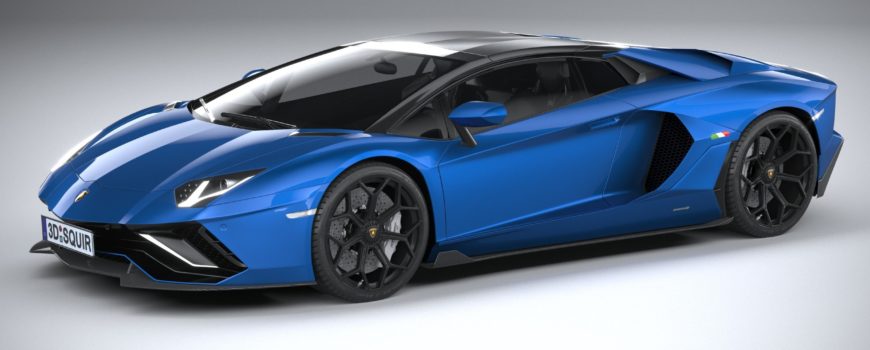Lamborghini Goes Electric
Stick a fork in Lamborghini’s V12 powerplant as we know it. Going forward, Lamborghini will start their segue into electrification with hybrid powerplants.
Motor Trend noted that “the biggest news from its release is the announcement that the last new V-12 models that will be sold without electrification are sold out, and all the other holdout non-hybrids don’t have much time left. “Earlier this year we announced a robust roadmap towards future product electrification that starts with hybridization of the entire range in 2024 including the vision for a new fully-electric fourth model within the decade,” said Stephan Winkelmann, Chairman and CEO of Automobili Lamborghini.
Earlier this year, around summertime, Lamborghini started to deliver the Huracán STO, its “motorsports-inspired” model that delivers on that claim. The Aventador Ultimae and revived Countach LPI 800-4—both of which are on the same chassis and were announced at around the same time—are both already sold out. They are the last “traditional” naturally aspirated V-12 engines the company will produce, although the company appears to leave the door open to a possible hybrid V-12 in the future.
You can bet that the last of the non-electrified Lamborghinis will be very collectible in the decades to come and the thought of electric Lamborghinis has Ferruccio Lamborghini rolling in his grave.
As Lamborghini Goes Electric, so does every other manufacturer
It’s no secret that the world’s auto manufacturers are moving to electrification because of government mandates around the world. The European Union will aim to have at least 30 million zero-emission vehicles on its roads by 2030, as it seeks to steer countries away from fossil fuel-based transport, according to a draft document seen by Reuters.
The EU’s goal of climate neutrality by 2050 cannot be reached without introducing very ambitious measures to reduce transport’s reliance on fossil fuels,” the document said.
This presents unique problems in every country. The number one problem is how to produce the electricity to charge all of these cars. In California, our electrical infrastructure is a mess. On hot days, there are widespread brownouts and blackouts. On windy days, the state government mandates blackouts because our power lines might cause a brush fire.
Can you imagine what will happen when half of the cars on the road are electric? Adding 17 million juice-suckers will not be possible without further infrastructure.
Most of the world is reticent to accept nuclear energy in its current form and until some form of substitution is employed, such as the use of Thorium as the primary element in the production of nuclear energy, the world will not embrace it. So where are we going to get this electricity? Solar will not do it alone. Wind power wouldn’t come close to producing anything close to reasonably efficient power generation.
Let’s also not forget that you can’t just add wall chargers in hundreds of homes in the same subdivision overnight. The power line feed from your utility company is insufficient to provide the additional required power needs as is. While many homes have 240V capability, fast charging can only come from 480V capabilities. Streets will need to be dug up to install more robust power lines. This won’t be easy, it won’t be cheap and it will take a decade or more before our country will be totally electrified.
Most of the world is reticent to accept nuclear energy in its current form and until some form of substitution is employed, such as the use of Thorium as the primary element in the production of nuclear energy, the world will not embrace it.
On the backside, the world still has not figured out how to recycle the batteries from these cars. Are they going to go into landfills? Wait, aren’t we trying to help the environment?
Japan has gone a different route. Led by Toyota, hydrogen is proving to be promising. The Toyota Mirai is a hydrogen fuel cell car. Don’t know what a hydrogen fuel cell is? This technology was used to get us to the Moon during the Apollo missions. These are zero-emissions cars that produce water as their by-product.
The 2021 Toyota Mirai has officially set the GUINNESS WORLD RECORDS title for the longest distance by a hydrogen fuel cell electric vehicle without refueling. The Mirai achieved an unprecedented 845 miles driven on a single, five-minute complete fill of hydrogen during a roundtrip tour of Southern California as it set the record. Granted, an expert hypermiler was at the wheel, but Toyota has proven 400+ miles range on a five-minute fill-up.
The debate about electrification is no longer just about commuter cars. All cars have to move in this direction, including our beloved muscle cars and sports cars – what’s left of them.
We know the Mustang is going hybrid around 2024 or 2o25, and the re-born Dodge muscle cars are about to debut in 2024. GM’s Camaro is dead in 2024, but might see an EV sedan as a “replacement.”
In the past 20 years, sports cars have fallen out of favor. Who’s to blame? Your neighbors. Look at all the SUVs on the roads today. If you commute regularly, next time you’re stuck in traffic, look around you and see how many people are driving alone in an SUV that seats five or more people.
Progress is progress, as they say, but we truly are living in the golden age of muscle cars. While electric “muscle cars” will perform better in every performance measurement, but the absence of auditory pleasures that coincide with throttl pressure, the driving experience wil never be the same.

